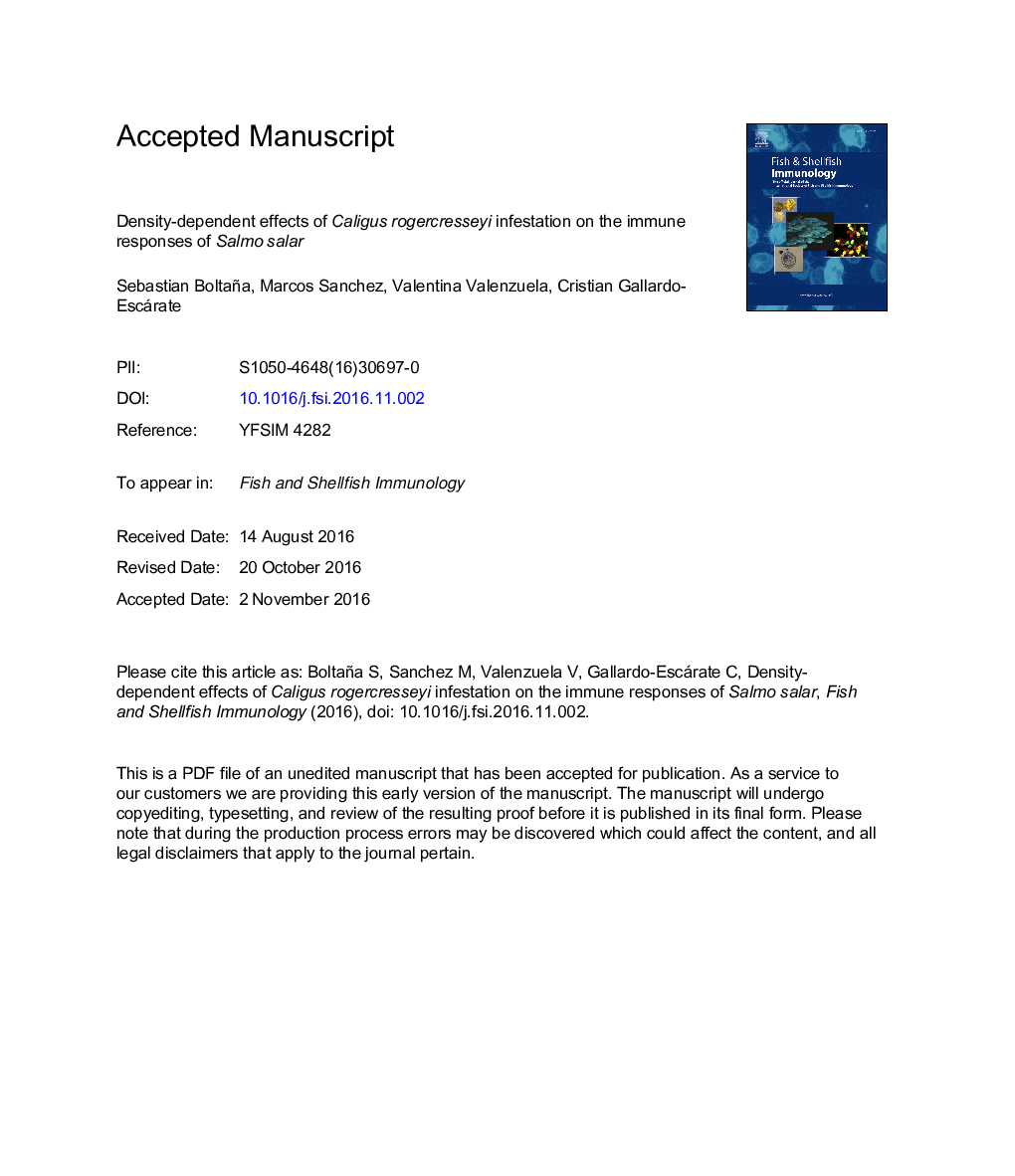| Article ID | Journal | Published Year | Pages | File Type |
|---|---|---|---|---|
| 5540802 | Fish & Shellfish Immunology | 2016 | 30 Pages |
Abstract
Sea lice infestations are a particular concern in the salmonid aquaculture industry due to damaging effects on fish growth, disease/infection susceptibility, and survival. Despite the impacts of sea lice parasitism, few studies have determined corresponding physiological thresholds, or the quantity of sea lice that can trigger measurable effects in the host immune response. The present study evaluated the mRNA expressions of immune-related genes in Salmo salar (Atlantic salmon) under infestation challenges with contrasting loads of the sea louse Caligus rogercresseyi. Specifically, two groups of S. salar were infected with either 35 (i.e. low parasitic load) or 100 (i.e. high parasitic load) copepodids per fish. At 14 days post-infestation, the mRNA levels of immune-related genes (e.g. related to oxidative stress, pro- and inflammatory responses, and the adaptive TH1/TH2 pathways) were assessed through RT-qPCR. Significant differences were found in relation to parasitic load, suggesting density-dependent effects that activated the S. salar immune system. Higher parasitic load promoted strong inflammatory and oxidative stress responses that were correlated with the TH1 immune response. This study highlights the molecular signatures for distinct parasitic loads, providing new perspectives towards fully understanding parasite-host interactions.
Related Topics
Life Sciences
Agricultural and Biological Sciences
Aquatic Science
Authors
Sebastian Boltaña, Marcos Sanchez, Valentina Valenzuela, Cristian Gallardo-Escárate,
